
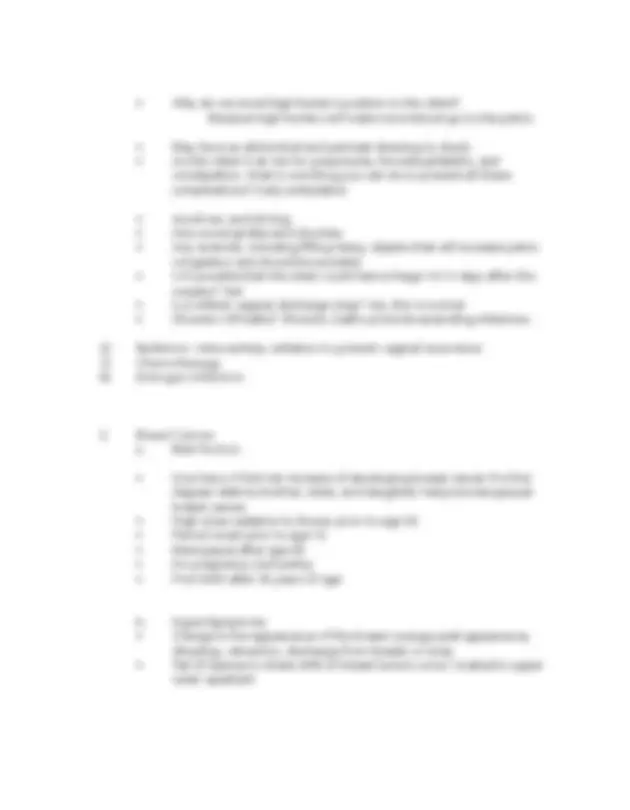
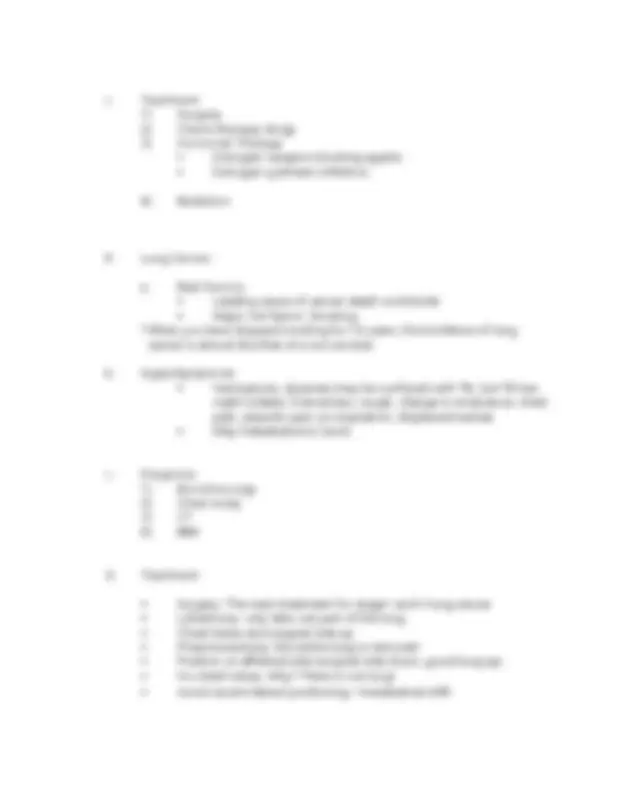
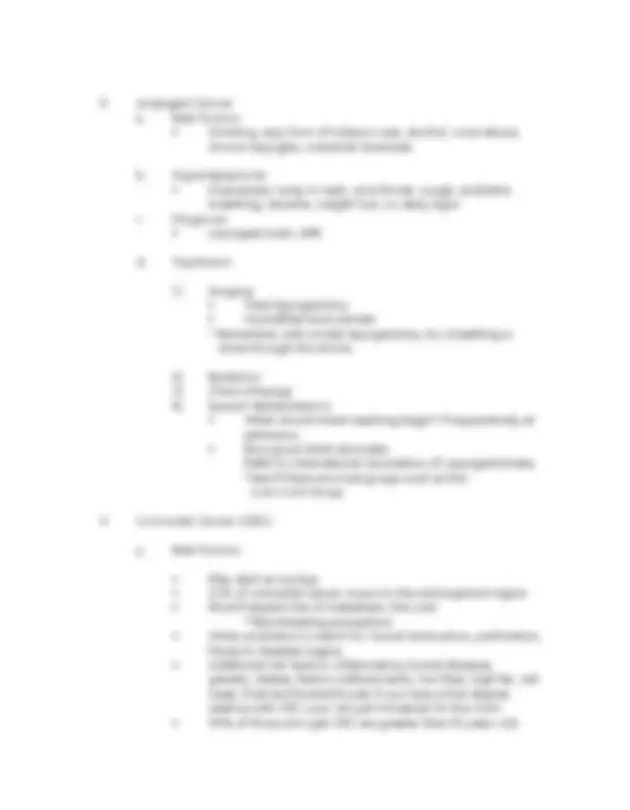
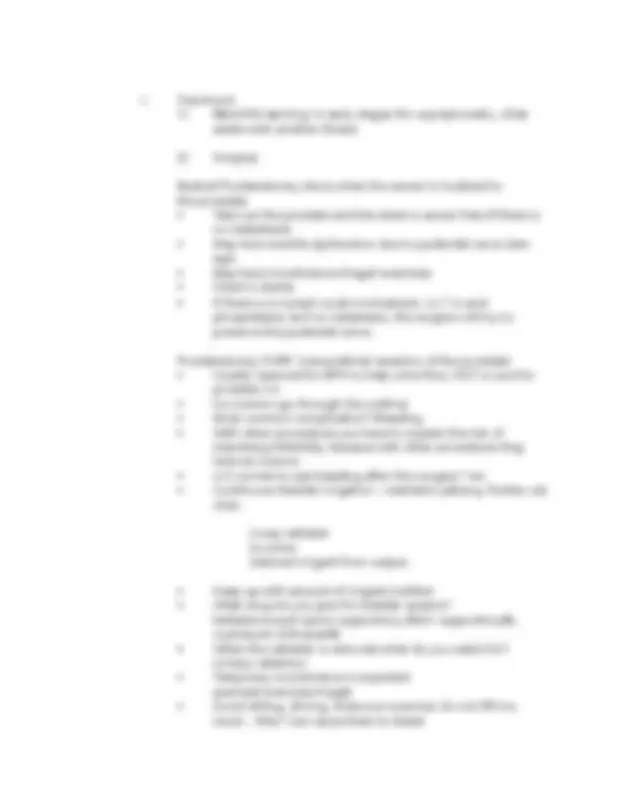
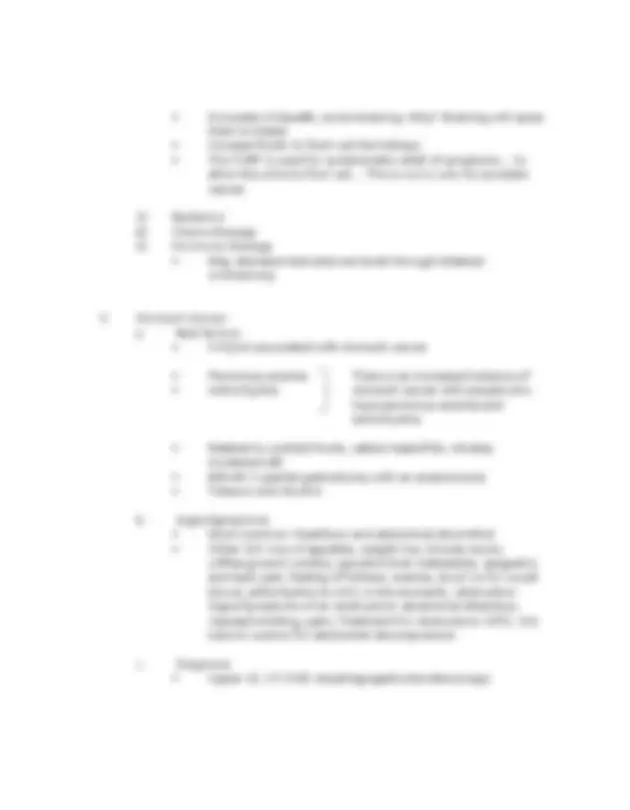



Study with the several resources on Docsity

Earn points by helping other students or get them with a premium plan


Prepare for your exams
Study with the several resources on Docsity

Earn points to download
Earn points by helping other students or get them with a premium plan
Community
Ask the community for help and clear up your study doubts
Discover the best universities in your country according to Docsity users
Free resources
Download our free guides on studying techniques, anxiety management strategies, and thesis advice from Docsity tutors
Hurst reviews LPN resources for an overview of different types of cancer
Typology: Study notes
1 / 10

This page cannot be seen from the preview
Don't miss anything!







Specific Types of Cancer: An Overview
a. Risk factors:
b. Signs/Symptoms:
c. Diagnosis:
What if the Pap Smear is abnormal? Repeat test
d. Treatment:
a. Risk Factors:
b. Signs/Symptoms:
c. Diagnosis:
d. Treatment:
c. Treatment:
a. Risk Factors:
b. Signs/Symptoms:
c. Diagnosis:
d. Treatment:
b. Signs/Symptoms:
d. Treatment:
a. Risk Factors:
It is OK to place a little piece of 4X4 inside the stoma during skin care to absorb urine....... Just don’t forget to remove it!
a. Signs/Symptoms:
b. Diagnosis:
c. Treatment:
Watchful waiting: in early stages (for asymptomatic, older adults with another illness)
Surgery:
Radical Prostatectomy (done when the cancer is localized to the prostate)
Prostatectomy (TURP- transurethral resection of the prostate)
3-way catheter No kinks Subtract irrigant from output.
d. Tx:
No stomach no intrinsic factor can’t absorb oral B-12 can’t make good
RBCs client is anemic
TESTING STRATEGY Never manually irrigate a catheter with a fresh surgery client, without a physician’s order.
TESTING STRATEGY Always assess prior to selecting an implementation answer. Always assess the client first.